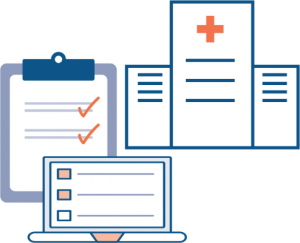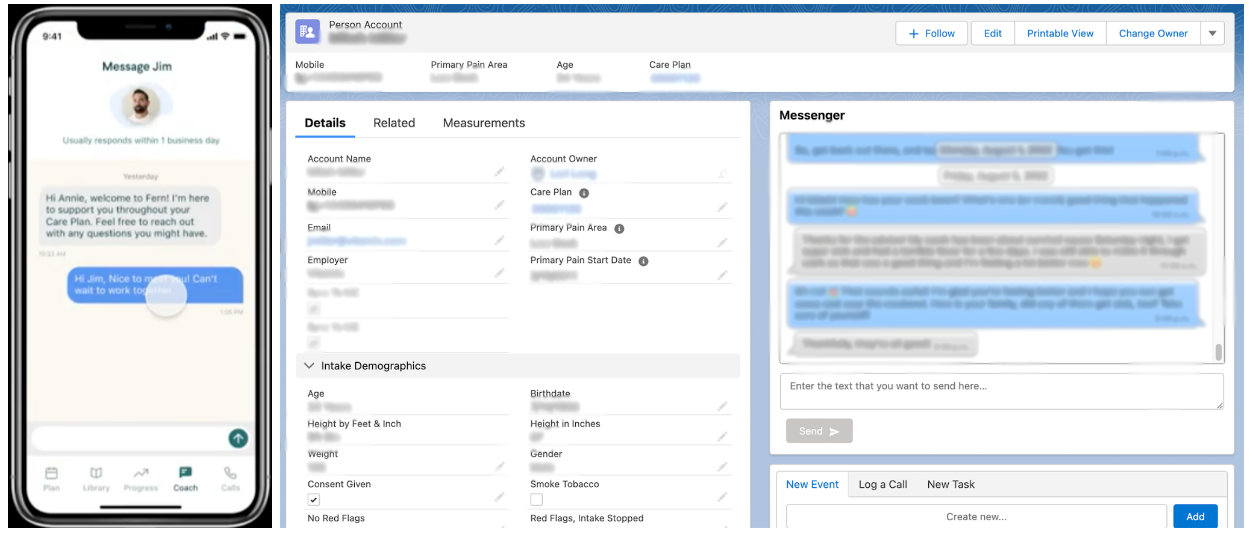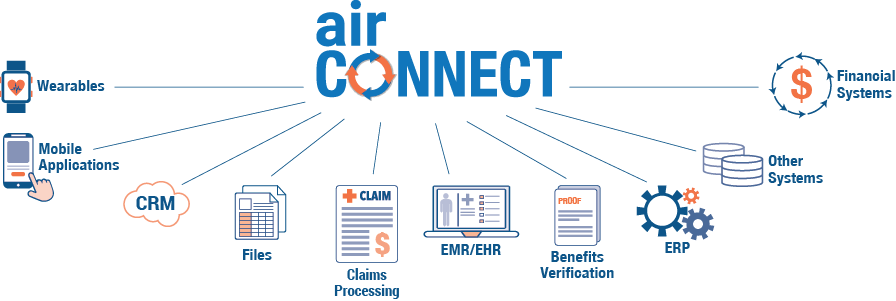Interoperability Furthers Collaboration of Patient Care for Improved Health Outcomes and Reduced Costs
The topic of healthcare data can become contradictory. From one viewpoint Protected Health Information (PHI) has strict guidelines on how the data is accessed and transported due to HIPAA laws. However, organizations without access to medical records risk being unable to provide the best patient care. This is where interoperability steps in. Interoperability allows for different systems to access, exchange, and integrate data in a coordinated manner so that it is usable, can provide seamless portability of information, lower the cost of care, and optimize the health of individuals across the world.
Why Should You Care?
This is a global initiative to improve healthcare. It affects all of us.
Companies: In order to achieve a complete 360 degree view of the patient, healthcare organizations must be able to seamlessly connect with and act on data collected by the patients’ care team across multiple providers. This connection leads to more accurate transparency, less time wasted, no data silos, increased productivity, flexibility, and a simplified flow of information.

Providers: Offer better, more accurate patient data across all systems while also gaining the ability to provide real-time updates to provide the best possible care. Interoperability leads to personalized care, faster diagnosis, shorter wait times and less errors as information moves between systems seamlessly, giving doctors the right information when they need it.

End Patient / Customer: Patients have easy, secure access to their full medical history. They also reap the benefits of interoperability by avoiding unnecessary questions or re-tests, shorter wait times, less errors, and an all-around more satisfactory patient experience.

What does this mean for Healthcare?
As technology continues to improve it becomes more and more important for healthcare organizations to have protected patient data access, standard care tools, and secure ways to cohesively share data. Interoperability does all of these things, and much more for the healthcare industry. The benefits of interoperability include:
- Better Care Coordination: The real-time access to patient health information allows providers to avoid miscommunications and provide more accurate patient health information.
- Higher Efficiency: Interoperability allows real-time access to patient data, thus increasing productivity, response time, and overall efficiency. It also eliminates redundant manual tasks, enables insurance verification, and sets systems up for success on automations and workflows while dramatically reducing administrative burdens.
- Better Experience: Data interoperability reduces the amount of time and work needed for both internal and external administrative duties, creating a better experience for both employees and patients. For example, automating a patient intake process to avoid repeat patient paperwork.
Interoperability allows healthcare providers to have access to prescription lists, discharge data, hospital admissions, healthcare plans, lab test results, insurance verification, and full medical history. Having access to this data helps providers reduce the chance of duplicated processes and tests while making optimal healthcare decisions and developing patient care plans.

Example: CopperHill integrated Salesforce Health Cloud with a client’s proprietary mobile application to enable interoperability and alleviate communication challenges between patients and care coordinators.
Why now?
You may wonder why interoperability has become such an important topic in recent years. The reasoning behind this push is the 21st Century Cures Act, established in 2016. This law seeks to ease the regulatory burdens associated with the use of EHRs to enable different systems to access, exchange, and integrate data in a coordinated manner. The Cures Act allows us to prohibit information blocking and optimize the health of individuals around the world through increased interoperability. More patient data than ever is being exchanged virtually between care providers, and the Cures Act has allowed providers to offer free of charge patient portals for patients to view their medical records.
Interoperability offers the opportunity for health personnel to streamline connectivity by sharing information, within HIPAA guidelines, between health staff, retailers, systems, apps and databases. With the rise in value-based care, accelerated creation of industry data, and the need to access modern digital capabilities, we are quickly heading towards the need for interoperability in healthcare.

Competitive and Cost Pressures
Recent movement in the market has caused increased interoperability among large businesses, as partnerships begin to form in hopes of offering healthcare clients “one-stop shopping” for interoperability and data governance tools. When large companies come together, their systems follow suit, thus creating a rapidly growing interoperability web involving shared resources and data. This can lead to improved products and services along with a single shared information repository. Which increases patient-provider trust and ultimately better healthcare outcomes.
How Can We Enable Interoperability?
CopperHill has a whole team of dedicated data and integration experts. We use tools such as the AIR Platform to enable interoperability and unlock the benefits of better care, higher efficiency, and an improved experience for your patients. The AIR Platform is capable of aggregating data to make it accessible and easier to read. AIR Connector, AIR Platform’s middleware tool, also offers interconnectivity through remote systems to move important data. This interconnectivity can define the syntax on exchanging data between systems while also offering predefined connectors based on industry best practice. All in all, the AIR Platform helps with data governance by facilitating a secure communication between systems.

Contact us if you are interested in learning more about how interoperability can take your patient and care management to new levels.




